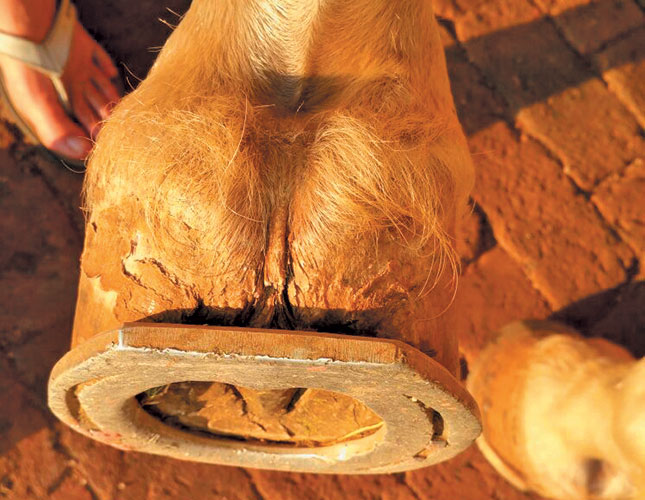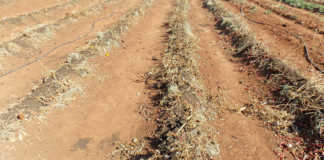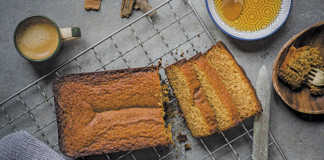
Photo: Kim Dyson
Sheared heels are common in horses that are toe in or toe out, and are likely to recur if conformation is poor. Fortunately, a farrier can make all the difference, says Kim Dyson.
The key to healthy hooves is balance. If a horse has good hoof and leg conformation, its feet strike the ground evenly, and won’t be prone to sheared heels.
By contrast, a horse with crooked legs or poor joint angles will have unbalanced feet that wear unevenly. One side of the hoof will have a different shape to the other, and the horse will be a perfect candidate for sheared heels.
In some cases, pain higher up the leg, in the shoulder or the wither, can cause the leg to move unnaturally and the hoof to land badly, leading to sheared heels.
Other causes are poor trimming and shoeing, where the sides or heels of the hoof are left uneven and out of balance, or neglect, where bare feet have been allowed to grow too long, combined with one side of the long hoof breaking off.
An unbalanced hoof puts uneven stress on the rear part of the foot, resulting in too much force on one side, and one heel bulb ending up higher than the other.
This, in turn, can cause the tearing of soft tissue. There is also a good chance that the hoof will crack due to the uneven pressure. Some horses end up with a deep fissure between the heel bulbs.
Thrush can accompany sheared heels.
Signs of sheared heels
Get the horse to stand on a level surface and look at the legs from behind; you will see that one side of the heel is higher than the other.
Now stand next to the horse and look at the coronary band on the affected heel; you’ll notice that it does not gradually angle toward the ground.
Finally, lift the foot and examine the frog of the affected hoof; it might be sunken or off centre, and there might be a flare on one side of the hoof wall.
The earlier you become aware of the problem of sheared heels and address it, the better the prognosis. Normally, the best solution is to get a farrier to do corrective trimming and shoeing in order to restore proper heel alignment and foot balance.
This might involve trimming the longest heel, and fitting a full bar shoe to stabilise the heel and spread the horse’s weight evenly. The shoe might need to be reset several times before an improvement is seen.
Mild cases can be treated by simply removing the shoes, trimming the hoof to restore balance, and allowing the horse to go unshod in a spacious area with plenty- of room for movement. This will allow the foot to function more normally and redistribute the weight properly.
Distribute the load over the frog
Even if you correct the sheared heel, the horse’s conformation will remain the same, and it will be predisposed to displacing that heel again.
If such a horse has to be shod, it will require some type of support over its frog, either a heart bar shoe or a shoe with a plate across the heel to support it. The better the load is distributed over the frog, the better the overall health of the hoof.
Kim Dyson breeds Arabians and Lusitanos, and has 22 years’ experience in holistic equine and human body work.











